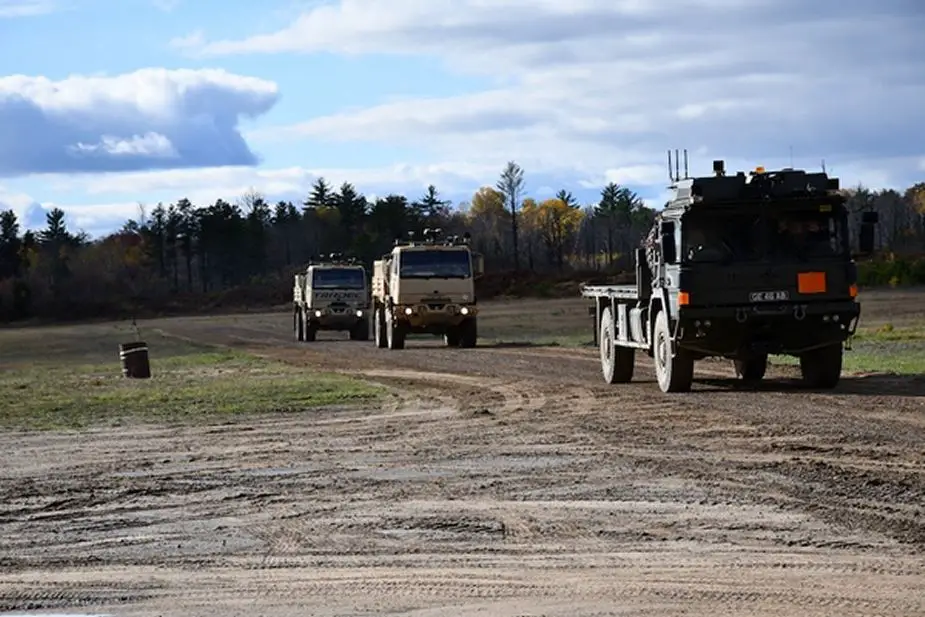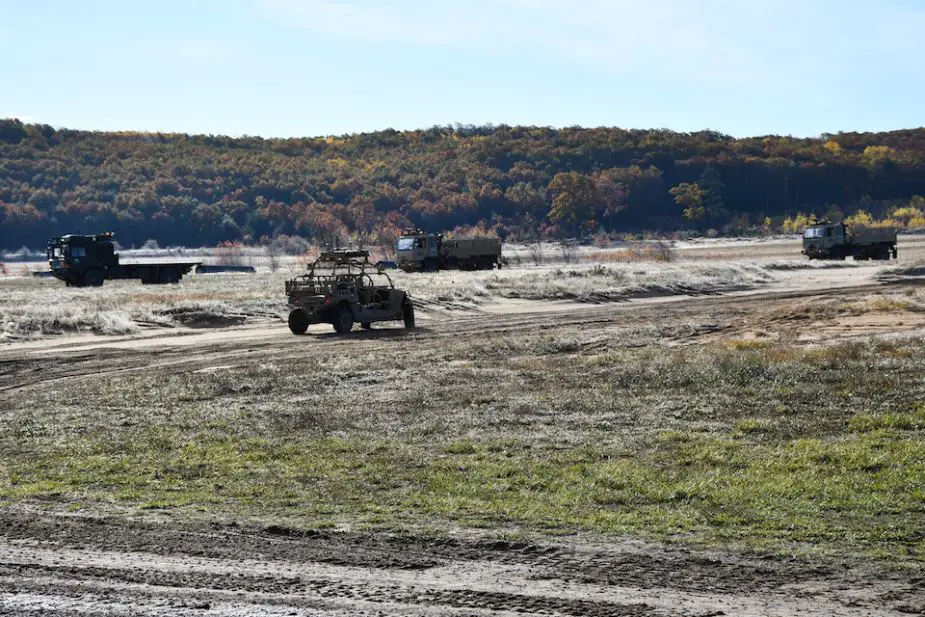The Defence Science and Technology Laboratory (Dstl), together with the U.S. Army Tank Automotive Research, Development and Engineering Center (TARDEC) and the U.S. Army Armament Research, Development and Engineering Center (ARDEC) demonstrated unmanned trucks formed into driverless convoys, unmanned aerial vehicles, and a robotic all-terrain 4x4 steered via a remote tele-operator, British and American soldiers. As a result, the Coalition Assured Autonomous Resupply (CAAR) demonstration showed initial capability in unmanned tactical resupply incorporating a combined line-haul convoy, autonomous ‘last-mile’ ground and air capabilities.
 A British Army MAN SV 6-tonne truck leading two US Light Medium Tactical Vehicle trucks in a driverless convoy.
A British Army MAN SV 6-tonne truck leading two US Light Medium Tactical Vehicle trucks in a driverless convoy.
The ‘last mile’ represents the final leg of the logistics and resupply route between the most forward base and troops in the field and can be the most difficult and dangerous stage of logistics support to a combat zone. The line-haul convoy is the first time ever that a UK-US collaboration has joined together in this way, with a British Army MAN SV 6-tonne (HX-60) truck as a ‘leader’ vehicle in the convoy, followed by two US Light Medium Tactical Vehicles (LMTV) trucks.
For this early stage of the collaboration, safety drivers monitored the semi-autonomous vehicles which were controlled using real-time information or following GPS waypoints. The week-long experiment is expected to inform future autonomous capabilities. This is a new way of coordinating and delivering vital supplies to front-line operations, aiming to reduce risk to those troops and provide on-demand delivery of food, fuel or ammunition to the so-called ‘last mile’.
 A remote-operated 4x4 being tested by the British and US Armies out in Michigan.
A remote-operated 4x4 being tested by the British and US Armies out in Michigan.
This CAAR event is the first demonstration in a 3-year project with a goal of bringing to life a series of concepts which can provide unmanned support to the last mile. The convoy was led by a British MAN SV 6-tonne, two axle truck, travelling at speeds of up to 25 mph, providing the leader vehicle for the following two US LMTV trucks, using integrated robotics to make decisions about speed, steering and other driving functions.
The UAVs demonstrated included the British-developed Malloy Aeronautics Hoverbike. An advanced prototype quadcopter drone, it can deliver more than (100kg) of supplies, all using a simple tablet controller. It has potential to be used for humanitarian aid and could one day carry a casualty away from danger. This was the first time this version of the Hoverbike has been unveiled.
A tele-operated Polaris MRZR, fitted with Light Detection and Range (LIDAR), sensors, cameras and GPS. This was operated by British Soldiers from Combat Support Unit Trials Development Unit (CSS TDU) as part of a joint UK-US trials team. Using nothing more than an X-Box game console controller, Cpl Mortimer and LCpl Thorne, ‘drove’ the 4x4 around the area.














